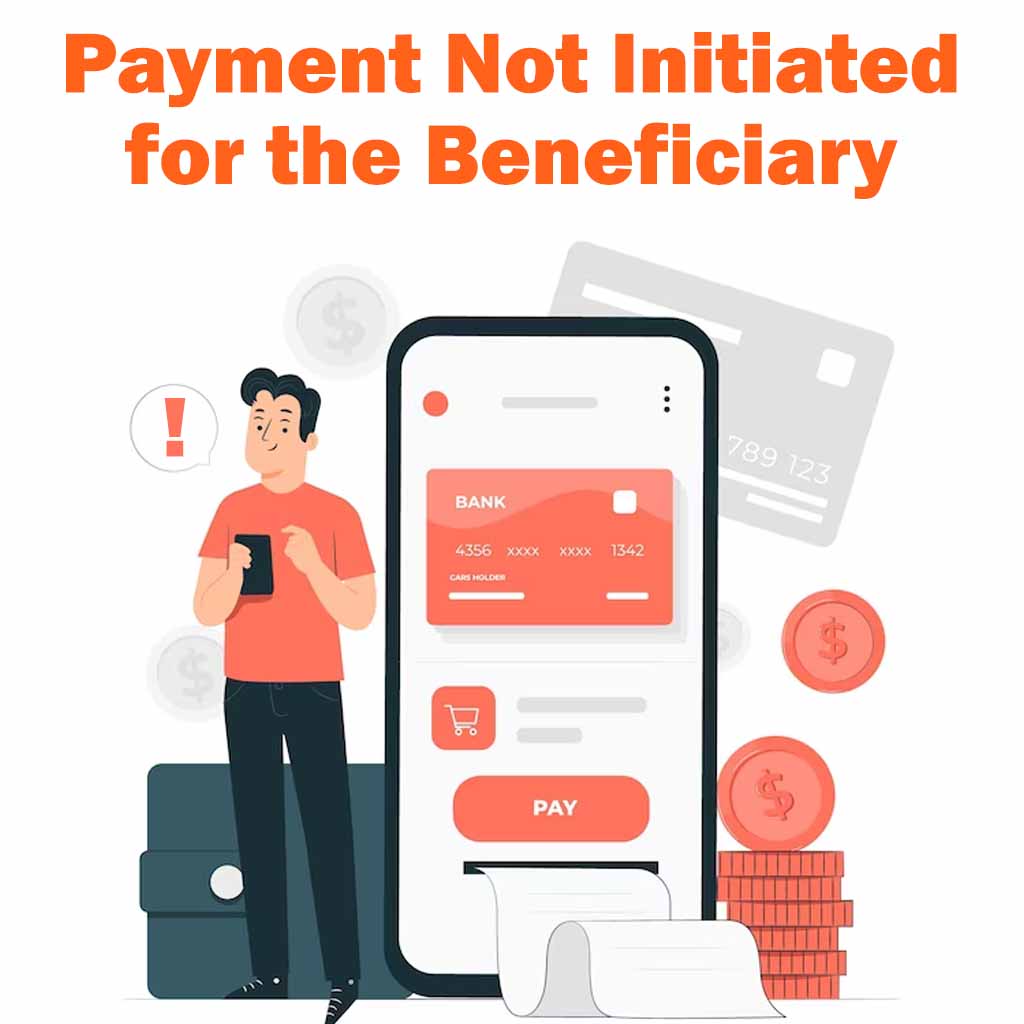Payment Not Initiated for the Beneficiary: A Closer Look - Digiforum Space
Share
Facebook X LinkedIn Tumblr Pinterest Pocket Skype Messenger Messenger Viber
Payment Not Initiated for the Beneficiary: A Closer Look
In today’s digital age, the efficiency and reliability of payment systems are crucial for businesses, individuals, and financial institutions. Unfortunately, issues can arise, such as payments not being initiated for the intended beneficiary. This article explores the common causes, consequences, and solutions when payments are not initiated as expected, shedding light on this financial concern.
1) Payment not initiated for the beneficiary meaning
“Payment not initiated for the beneficiary” refers to a situation where a financial transaction, such as a fund transfer or payment, has not been successfully initiated or completed, resulting in the intended recipient (the beneficiary) not receiving the funds as expected. In other words, the payment process encountered an issue or obstacle that prevented the money from reaching the designated recipient. This can occur due to various reasons, including technical glitches, insufficient funds in the payer’s account, incorrect beneficiary information, or processing delays, and it can have different consequences for the payer, beneficiary, and financial institutions involved in the transaction. Resolving such issues often requires identifying the specific cause and taking appropriate corrective measures to ensure the successful initiation of the payment.
Payment not initiated for the beneficiary meaning in Hindi: लाभार्थी के लिए भुगतान प्रारंभ नहीं हुआ.
Related Articles
- Beneficiary Bank or Switch is Inoperative – Hindi
- How to Contact Mobikwik Customer Care?
- Bank account verification – Rs. 4 will be charged
- UPI Transaction successful but money not credited
- Flipkart Pay Later Charges
2) Understanding the Problem
When a payment is not initiated for the beneficiary, it means that the intended recipient has not received the funds as expected. This issue can occur in various payment scenarios, including bank transfers, online transactions, and automated bill payments. The consequences of such delays or failures can range from minor inconveniences to serious financial repercussions.
3) Common Causes of Payment Delays
Several factors can lead to payment delays or failures, including:
- Technical Glitches: Software or hardware issues in payment systems can disrupt the initiation process.
- Insufficient Funds: If the payer’s account does not have enough funds to cover the payment, it won’t be initiated.
- Incorrect Beneficiary Details: Entering incorrect beneficiary information, such as an account number or email address, can lead to failed payments.
- Payment Processing Delays: Some payment methods, like international wire transfers, can experience delays due to processing by intermediary banks.
4) Consequences for All Parties
When payments are not initiated for the beneficiary, it has ripple effects:
- Payer: The payer may incur fees, penalties, or damage to their credit score, depending on the nature of the payment.
- Beneficiary: The beneficiary might experience financial strain or inconvenience if they were relying on the funds for a specific purpose.
- Financial Institutions: Banks and payment service providers face customer dissatisfaction and potential disputes.
5) Resolving the Issue
Resolving the problem of payments not being initiated involves different steps based on the cause:
- Technical Glitches: Contact customer support, report the issue, and ask for assistance. The provider may need to rectify the problem.
- Insufficient Funds: Ensure your account has enough funds to cover the payment or reschedule it when funds are available.
- Incorrect Beneficiary Details: Double-check the beneficiary’s information, as even a minor error can lead to payment failure.
- Payment Processing Delays: For international transfers, allow extra time due to processing by intermediary banks and follow up with your bank if necessary.
6) Preventing Future Issues
To prevent future occurrences of payments not being initiated for the beneficiary, consider these proactive steps:
- Double-check beneficiary information before making payments.
- Maintain sufficient funds in your account for scheduled payments.
- Stay updated on the payment processing times and policies of your financial institutions.
- Regularly monitor your accounts for any irregularities or failed payments.
7) FAQs – Frequently Asked Questions & Answers
Q. What does “Payment not initiated for the beneficiary” mean?
A. “Payment not initiated for the beneficiary” refers to a situation where a financial transaction, such as a fund transfer or payment, has not been successfully initiated or completed, resulting in the intended recipient (the beneficiary) not receiving the funds as expected. This can happen due to various reasons, including technical glitches, insufficient funds in the payer’s account, incorrect beneficiary information, or processing delays.
Q. What are the common causes of payment delays?
A. Several factors can lead to payment delays, including technical glitches in payment systems, insufficient funds in the payer’s account, incorrect beneficiary details, and processing delays for certain payment methods like international wire transfers.
Q. What are the consequences when payments are not initiated for the beneficiary?
A. When payments are not initiated for the beneficiary, it can have consequences for all parties involved. The payer may incur fees, penalties, or damage to their credit score, the beneficiary might experience financial strain or inconvenience, and financial institutions may face customer dissatisfaction and potential disputes.
Q. How can I resolve the issue of payments not being initiated for the beneficiary?
A. The steps to resolve this issue depend on the cause. For technical glitches, contact customer support and report the issue. For insufficient funds, ensure your account has enough funds or reschedule the payment. For incorrect beneficiary details, double-check the information. In cases of payment processing delays, allow extra time and follow up with your bank if necessary.
Q. What can I do to prevent future occurrences of payments not being initiated for the beneficiary?
A. To prevent future issues, consider double-checking beneficiary informationbefore making payments, maintaining sufficient funds in your account, staying updated on payment processing times and policies, and regularly monitoring your accounts for any irregularities or failed payments.
Conclusion
The problem of payments not being initiated for the beneficiary can be frustrating and potentially harmful to both payers and recipients. Understanding the common causes, consequences, and solutions is vital for addressing this issue effectively. By staying vigilant, double-checking payment details, and promptly addressing any problems that arise, individuals and businesses can minimize the impact of such payment-related issues and ensure a smoother financial experience.
TagsFinancial Transactions Payment StatusCopy URL URL Copied
Send an email 23/10/20230 95 3 minutes read
Share
Facebook X LinkedIn Tumblr Pinterest Pocket Skype Messenger Messenger ViberShare
Facebook X LinkedIn Tumblr Pinterest Reddit VKontakte Odnoklassniki Pocket Skype Share via Email Print





